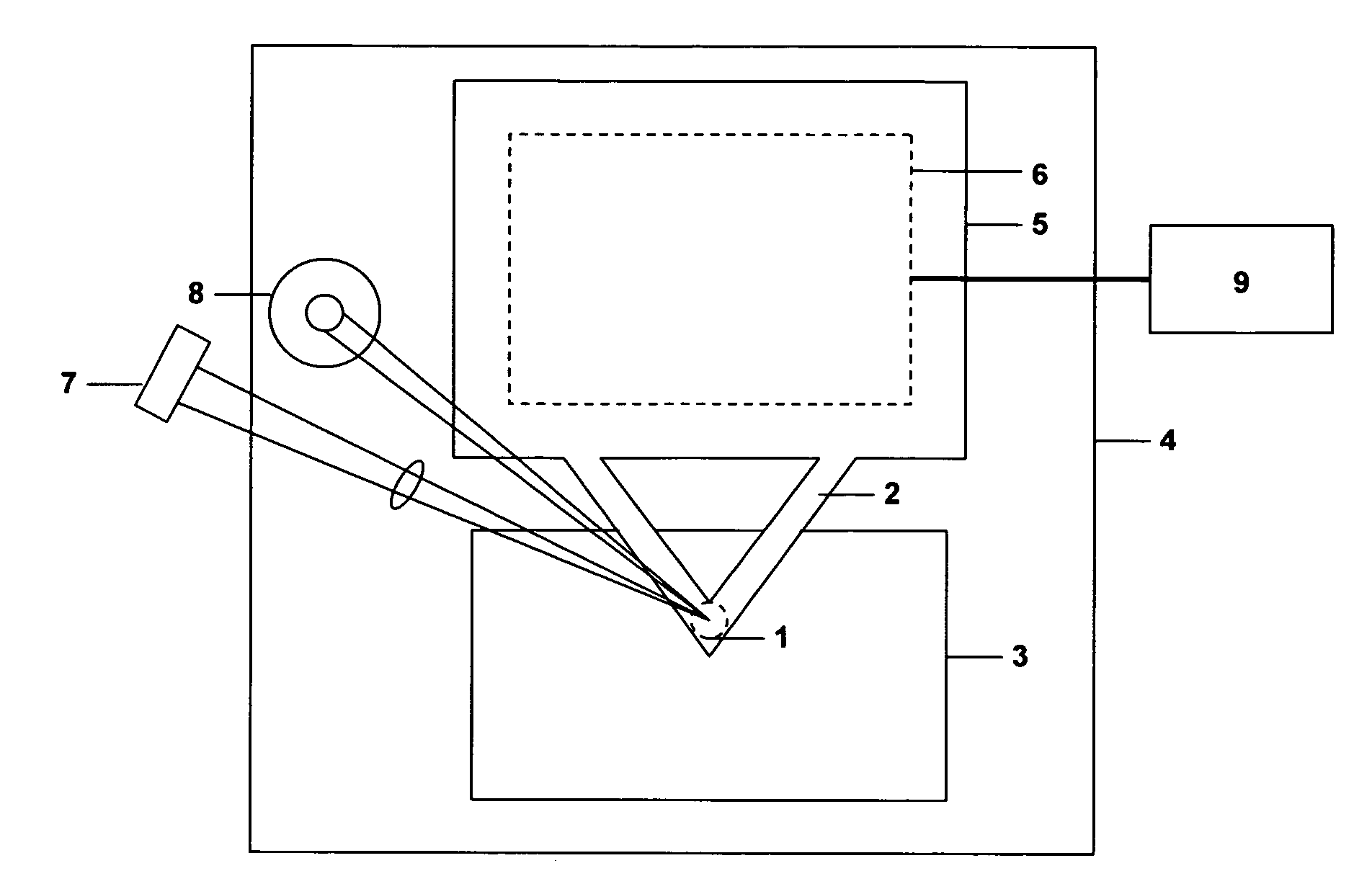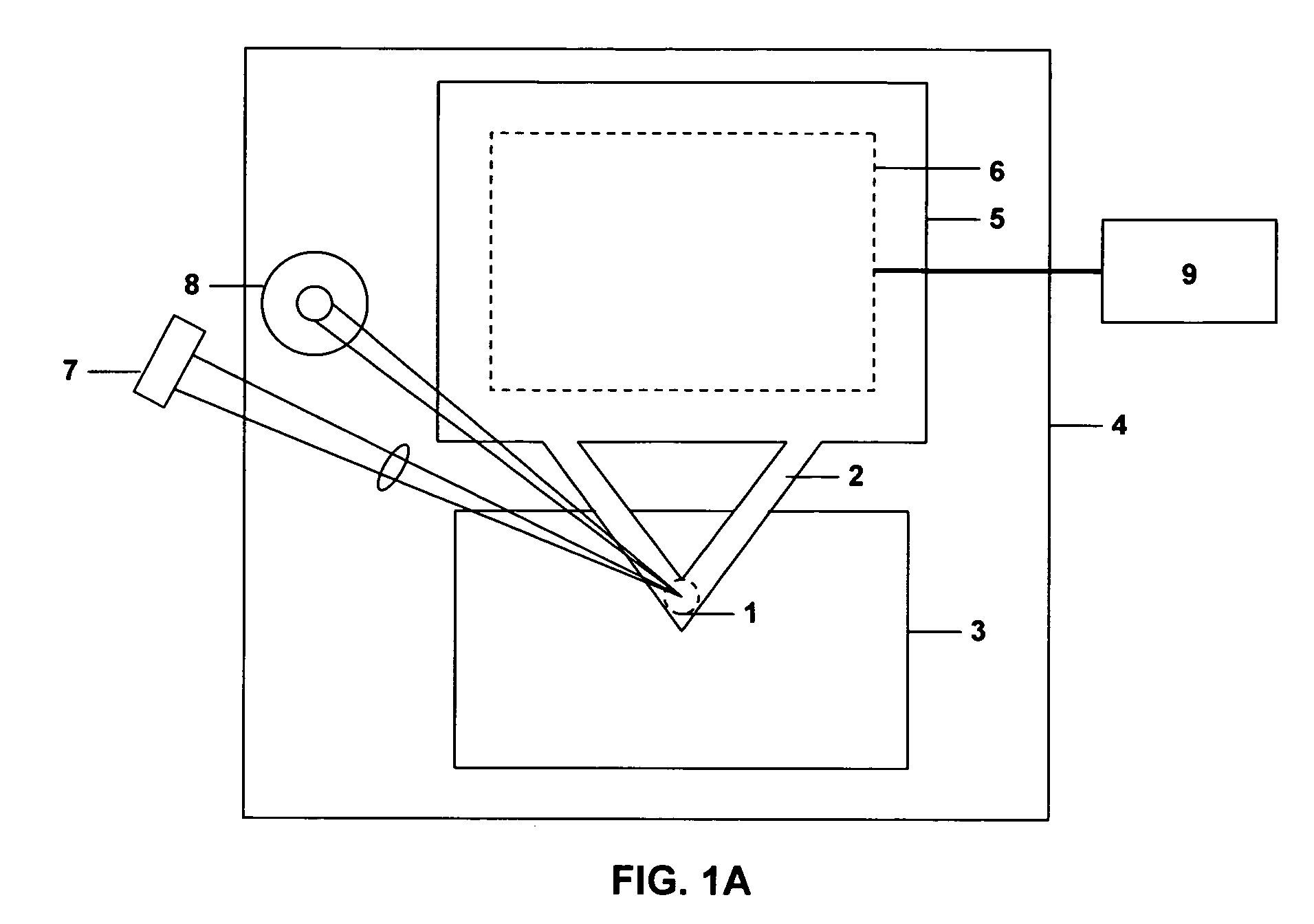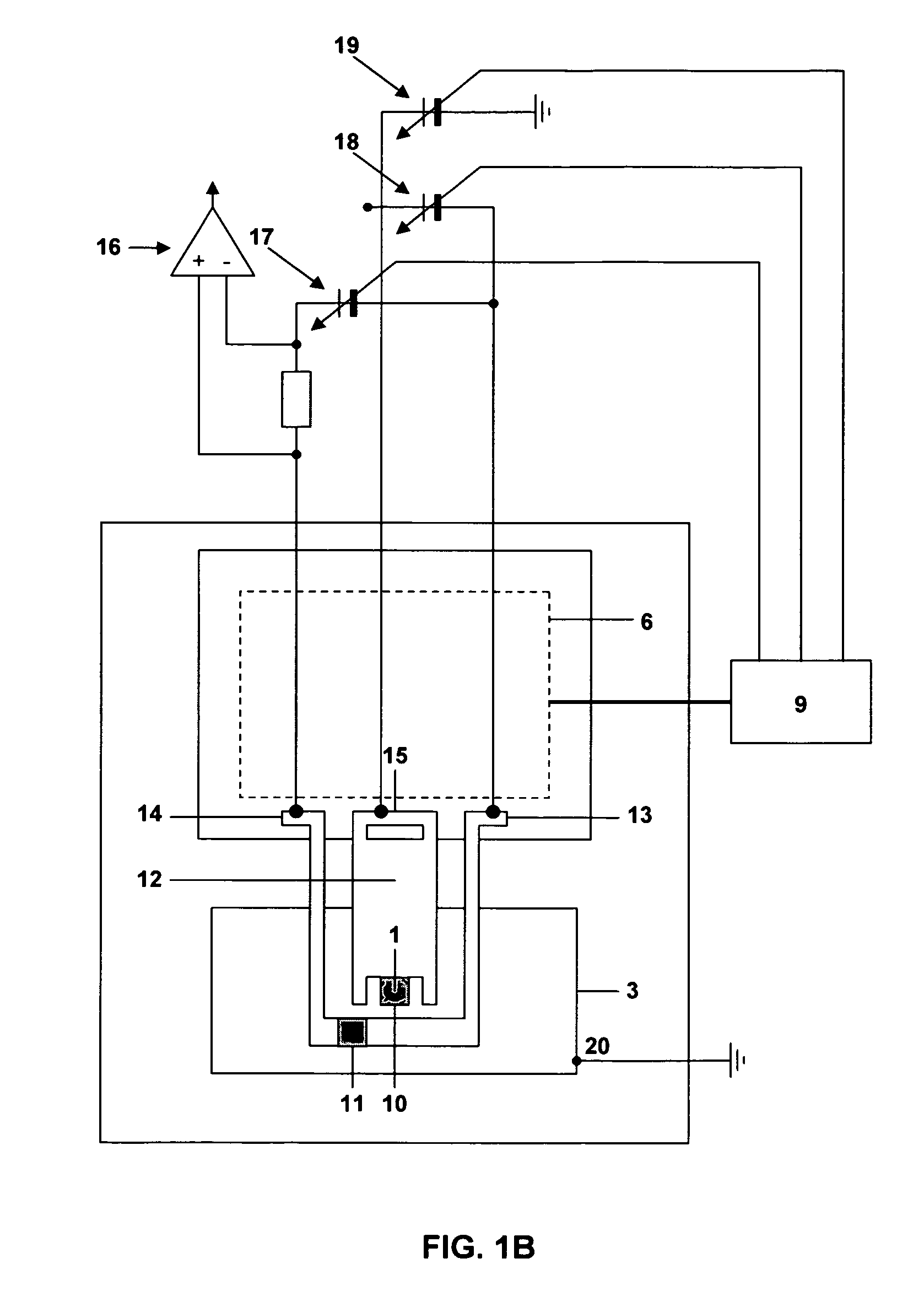Nanoindentation surface analysis tool and method
a surface analysis and nanoscale technology, applied in the field of nanoscale surface analysis, can solve the problems of bulk property analysis, inability of most mechanical characterization instruments and methods to evaluate the real surface of a material, destructive mechanical analysis, etc., and achieve the effect of fast sample throughpu
- Summary
- Abstract
- Description
- Claims
- Application Information
AI Technical Summary
Benefits of technology
Problems solved by technology
Method used
Image
Examples
example 1
General Method for Surface Analysis
[0105]An array of cantilever tips comprised of conductive, hard and stable materials such as silicone, silicone nitride or carbon are placed above the surface to be analyzed so as not to be in contact at the beginning of the scan. Smooth surfaces (<5 nm Ra) are preferable, but rough surface can also be characterized using this technique, but with less precision for the hardness measurements and a decreased probe tip lifetime. A coarse scan is optionally made over a wide range of temperature (20° C. to 600° C. using a coarse sampling rate ˜1 sample / 50° C.) and a wide range of load (10 nN to several μN using a coarse sampling rate of 1 sample per 100 nN). In other embodiments even coarser scans can be made if desirable. To perform the scan either the probe tip array or the sample can be moved. In preferred embodiments, the array is fixed and a precision sample stage is employed to move the sample under the fixed tip array. Using the results obtained ...
example 2
Specific Methods for Measurement of Tg and Hardness of a Thin Film
[0107]This example describes three different protocols for measurement of Tg and hardness.
Method (I)
[0108]According to Method (I) the temperature dependent hardness (T(F)) was measured at one indentation depth (see e.g. FIG. 4 in which an indentation depth of 0.5 nm was used). The function T(F) is a measure of the temperature dependent hardness. The room temperature hardness, as commonly cited in literature, was obtained by extrapolation to T=room temperature as illustrated in FIG. 5 (●). Extrapolation of T(F) to zero load (F=0) provides a measure of the local glass transition temperature as shown in FIG. 6. It should be noted that the conversion factor relating Tg to T_heater in FIG. 6 depends on the tip shape. The shape of the tip can easily be determined by SEM or by using a reference measurement on a known sample. The same applies to the conversion factor between F(T=0) and the hardness.
Method (II)
[0109]Method (II...
PUM
| Property | Measurement | Unit |
|---|---|---|
| temperature | aaaaa | aaaaa |
| temperature | aaaaa | aaaaa |
| thick | aaaaa | aaaaa |
Abstract
Description
Claims
Application Information
 Login to View More
Login to View More - R&D
- Intellectual Property
- Life Sciences
- Materials
- Tech Scout
- Unparalleled Data Quality
- Higher Quality Content
- 60% Fewer Hallucinations
Browse by: Latest US Patents, China's latest patents, Technical Efficacy Thesaurus, Application Domain, Technology Topic, Popular Technical Reports.
© 2025 PatSnap. All rights reserved.Legal|Privacy policy|Modern Slavery Act Transparency Statement|Sitemap|About US| Contact US: help@patsnap.com



